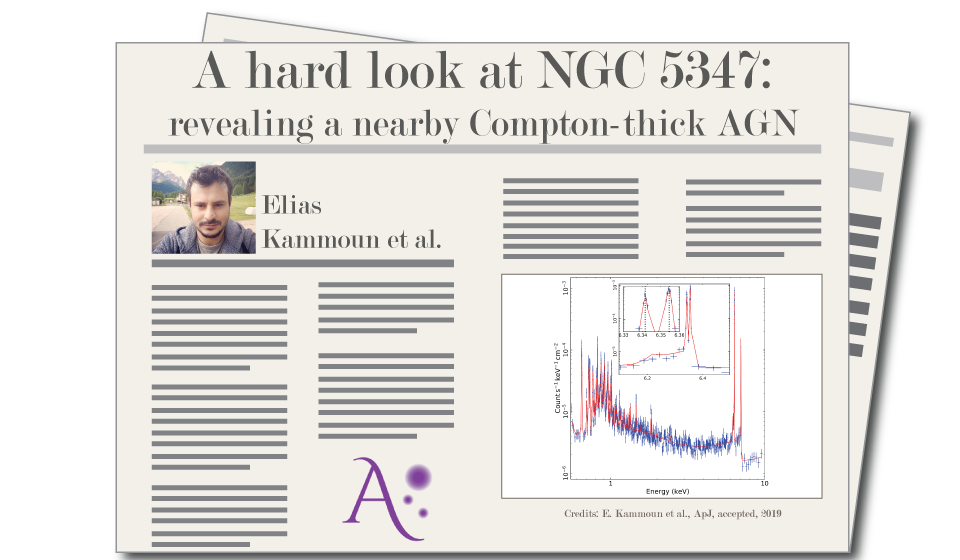
A hard look at NGC 5347

By Elias Kammoun
The origin of the cosmic X-ray background (CXB) is still under debate. Some models suggest that the amplitude and the shape of the CXB can be reproduced by requiring a large fraction of highly-spinning black holes. Other models argue that more than ~20% of the active galactic nuclei (AGN), in the local Universe, are required to be obscured by Compton-thick (CT) material in order to explain the observed CXB. Current observations show that less than 10% of the local AGN are CT. However, the number of identified CTAGN has recently increased thanks to the high sensitivity of NuSTAR, in the 3-79 keV range, providing us with a clearer view of the central emission. We are currently conducting a survey with NuSTAR (P.I. J. M. Miller), observing a complete optically-selected and volume-limited sample of Seyfert-2 galaxies in order to better understand obscuration, the distribution of column densities, and other fundamental parameters of obscured sources in the local Universe. In this work, we analyzed the spectra of NGC 5347 (z=0.00779, d = 34.7 Mpc) using archival observations with Chandra, Suzaku and recent ones with NuSTAR. We have shown conclusively that the source harbors a CTAGN with NH > 2.2✕1024 cm-2.
We also demonstrate that the Athena/X-IFU will open a new window in studying obscured AGN, thanks to its exceptional ability to resolve and identify spectral features. A 100-ks simulated spectra of NGC 5347 with the Athena/X-IFU allows us to clearly resolve the Fe K?1,2 and Fe K? emission lines, in addition to the Compton shoulder, which characterizes the reprocessed light emerging from the distant obscuring material. Any motion of this material - whether it is orbital and/or outflowing - will be then imprinted in the line profiles as broadening and/or energy shifts, and will be easily identified by the X-IFU. This will allow us to understand the nature and the dynamics of the obscuring/reprocessing material in AGN. Furthermore, the rich emission line spectrum in the soft X-rays will provide us with an unprecedented look at the various components contributing to this energy range, whether it is thermal emission from the host galaxy or an extended emission from the narrow line region.

